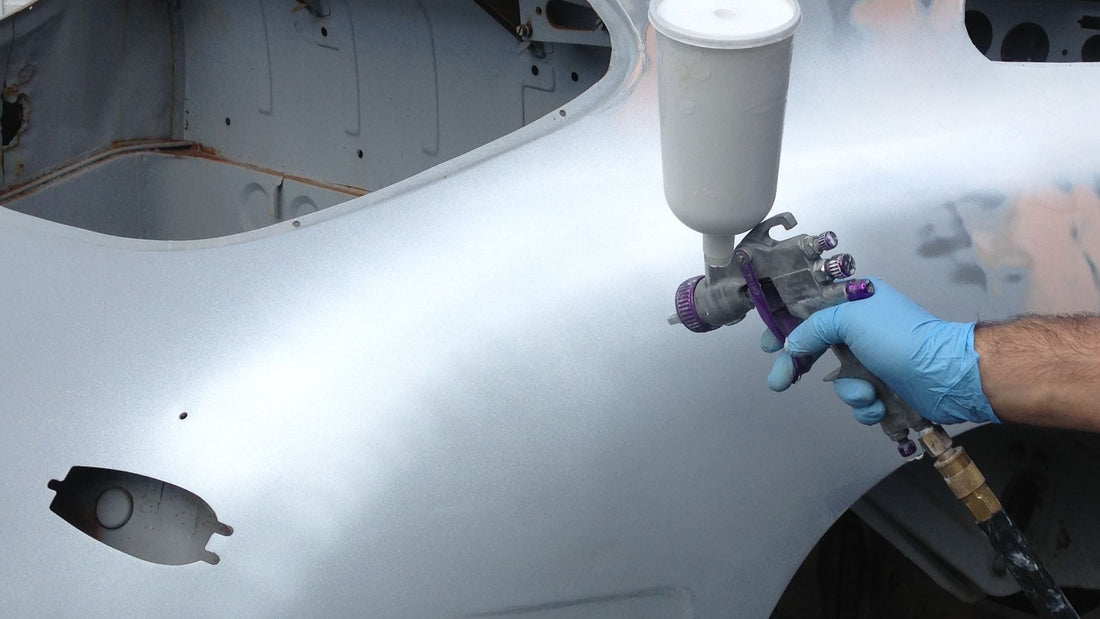Most Christchurch car owners do not realise how surprisingly complex a car respray is. It’s a complicated art augmented with science in succedent layer upon layer of primer, protection, pigment and finishes.
Car resprays are not simply incremental layers of paint sprayed all over, dry and drive off. It involves highly researched techniques and products, and the molecular chemical relationship between these layers. And it all starts with a primer - no, don’t even think about skimping on this “unseen” foundation.
If you are worried it will affect your final colour, then have a quick read about its vital function as well as its relationship with your final respray colour.
Starting At The Beginning
A car respray starts with a quality layer of primer that sets the tone for the success of your car respray as a whole. A bad primer layer equals a botched paint job. Primer has multiple functions, such as:
- A leveller that resolves imperfections and smooths out the “canvas”
- A protector from corrosion, temperature fluctuation, scratches, UV, etc
- An adhesive that ensures subsequent colour layers stick to the car
- A colour augmenter and differentiator
- A paint type facilitator
Layers And More Layers
The primer layer is followed by the 'base coat' which contains the main colour and effects and ultimately defines the final colour and appearance, whether glossy finish, metallic, or pearlescent. A long, laborious wet colour-sanding, cleaning, sanding phase takes place before any other layers are added or no amount of finishing clear coat will look glossy.
A triple-layer paint process would then have a 'mid coat' added at this stage which adds luxurious depth and richness to the overall look.
Lastly, the 'clear coat' gives a colourless, glossy layer that protects the layers underneath. It can be basic gloss or a mirror-like gloss.
Don’t Primers Have Colours?
Primer colours are limited to white, black, grey and red. The primer colour you choose might affect your final colour and years of experience and experimenting can teach you the subleties.
Black primers will deepen a colour and while extra coats of colour, e.g. yellow, will brighten the colur it will retain a subtle depth to it. Note: the more layers of colour paint sprayed on, the more sanding and cleaning, time, labour and cost involved.
Black primer is great for very dark colour resprays or if you want to customise a colour by giving it a subtly darker tone, deeper hue and richness.
Grey primer is the most widely used due to its neutrality. It is great for metallic-based paints and almost any colour you choose. Note: it might dull down the colour slightly.
White primer is also a popular choice because it delivers vibrancy and, unlike grey, will brighten a colour, not dull it down. It will suit lots of different colours but don’t use it with darker colours or you won’t get a rich finish.
Red primer (a.k.a. Red oxide) is great for smoothing out flaws along the surface and has excellent anti-corrosion properties which makes is a good choice for more exposed areas. It hardly affects the colour of the respray and, if at all, it might be a fraction darker.
Conclusion
Primer can affect teh final colour of your car respray and, if you are experienced, you can use that to customise the final colour.
Chat to our team of car respray experts in Christchurch about automotive paints and primers today!. Ph 09 276 4911

